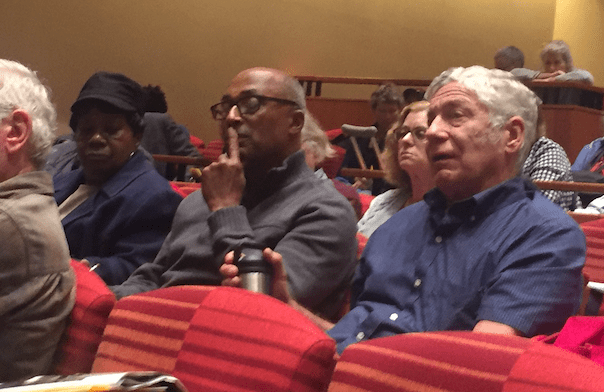
Hours after a pedestrian was run down and killed by a drugged up hit and run driver on Amsterdam Avenue, street safety advocates and at least one local politician knew where to focus the anger: on the uptown community board that has consistently blocked a redesign that would have made the speedway safer.
Police said that Erica Imbasciani, 26 (pictured right), was killed when Tyrik Cooper, 27, slammed his huge GMC Denali into her at 141st Street as he sped down Amsterdam late on Friday night. He fled the scene as Imbasciani died, crashing into another car, where he was finally caught by cops, the Daily News reported.
Cooper, of the Bronx, was charged on Saturday with vehicular manslaughter, leaving the scene, operating a motor vehicle impaired by drugs, and driving without a license.
Hours later, activists railed at the dangerous conditions on the roadway.
"Erica was killed on a stretch of Amsterdam Avenue where local residents and safe streets advocates have demanded a redesign that puts safety ahead of driver convenience — but Community Board 9 has stood squarely in the way," Transportation Alternatives said in a statement. "While Council Member Mark Levine has long supported the redesign, Mayor de Blasio has still refused to act."
The statement cited the roadway's "wide span" that "encourages drivers to speed."
"Amsterdam Avenue below 110th Street has been redesigned with pedestrian safety enhancements and protected bike lanes," the statement continued. "Uptown communities like Hamilton Heights, where this crash took place, deserve the same safety treatments."
Council Member Levine also called out local board members in a series of tweets.
This absolutely heartbreaking death occurred on a stretch of Amsterdam Ave with little protection for pedestrians, where on average there are 100 injuries/year in crashes. It is long past time we put safety first and implement the #AmsterdamAveRedesign. https://t.co/R7Rh3sotWL
— Mark D. Levine (@MarkLevineNYC) March 23, 2019
Levine did not call out CB9 Chairwoman Carolyn Thompson by name, but others did. Last year, Streetsblog's coverage of the board's rejection of a DOT-backed street safety plan for Amsterdam between 110th and 162nd streets [PDF] clearly identified the main opponent of safety.
“All it’s going to do is slow traffic down,” Thompson said at a “town hall” meeting on the project. “Every time you say you’re taking out a lane, you’re slowing traffic down."
Thompson had been presented with evidence that so-called "road diets" do not, in fact, slow down vehicular travel on a roadway, but she did not want to listen to facts.
"I don’t care what they’re saying," she said, also ignoring statistics showing that 141 people were injured in the 19 months that she refused to move the project forward. "It slows traffic down.” Another CB 9 veteran, Ted Kovaleff, also objected publicly.

Perhaps now that a person has been killed by a driver going too fast, Thompson may reconsider the advantages of roadways that make it more difficult to speed. Indeed, the TransAlt statement on the latest crash anticipated reactions like Thompson's, reminding activists of the chain of events that occurred after Dorothy Bruns killed two children on Ninth Street in Park Slope just over a year ago.
Activists had also sought safety improvements on that street, but they had been delayed. Almost immediately after the crash, the Department of Transportation moved rapidly to add protected bike lanes and other safety measures — even though Bruns killed the children after driving through a red light.
"Although reckless driving was a factor in this particular crash, safe street designs can mitigate bad driver decisions," TransAlt said, anticipating that some community members would argue that some crashes can't be prevented. "That’s why Mayor de Blasio must instruct the Department of Transportation to redesign this street in a way that puts safety first. We’re not going to eliminate traffic deaths in New York City if we continue to let drivers steer Vision Zero."
Forty three people have been killed on city streets so far this year — up 20 percent from the same point in 2018.
The Department of Transportation is under no obligation to listen to CB9's rejection of the proposal. It could begin fixing Amsterdam Avenue whenever it wants. Commissioner Polly Trottenberg has recently been under fire from some Council Members for not moving faster on safety redesigns and deferring too much to local community boards.
The agency's own statistics show that roadways that have been redesigned experience a double-digit drop in crashes and a 21-percent drop in injuries.
Thompson could not be reached for comment on Sunday.






